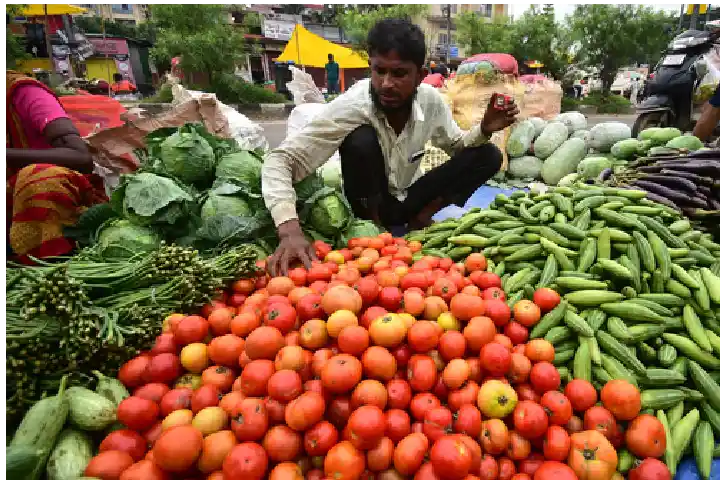

India's food prices (Image courtesy: IANS)
While GDP growth remains on track in 2023-24, the declining trend in headline inflation was briefly interrupted in the second quarter due to a spike in the prices of certain food items, however, according to the Finance Ministry, it was a temporary phenomenon caused by the seasonal and weather-driven supply constraints in a few food items.
In a report released by the Finance Ministry recently, it was stated that headline inflation has moved to track (under control) on the back of vegetable price correction and the recent reduction in LPG prices.
“As per the latest release of the consumer price index (CPI), headline inflation was 5 per cent in September, within the upper tolerance limit of inflation targetting. This indicates that the increase in inflation during July-August was only temporary, caused by the seasonal and weather-driven supply constraints in a few food items,” the report noted.
Among the 299 items in the CPI basket, only 11.4 per cent of food items with double-digit inflation in July caused a spike in headline inflation. However, this declined significantly to 7 per cent in September.
Alongside softening food inflation, the fuel & and light group witnessed a deflation in September.
As a result of the cut in prices of domestic LPG by Rs 200 per cylinder, inflation in LPG declined to (-) 12.7 per cent in September compared to 4.2 per cent in August, it said further.
Core (non-food, non-fuel) inflation further softened to 4.5 per cent in September from 4.9 per cent in August. This is the lowest core inflation recorded in the last 42 months.
Besides, August was the seventh consecutive month that core inflation has remained within the RBI’s upper tolerance band of 6 per cent.
“The recent price trends also vindicate the monetary policy stance of the RBI for the last one and a half years. Since May 2022, the monetary policy actions broadly included absorbing excess liquidity in the system by gradually increasing the policy repo rate by 250 basis points and changing the policy stance to the withdrawal of accommodation, to break the stickiness of core inflation and to keep the headline inflation at check,” the Finance Ministry report said.
The monetary measures of the RBI and the proactive supply-side interventions by the government to improve domestic availability of key food items and reduce input costs complemented each other well.
Consequently, headline inflation moderated to 5.5 per cent in the first half of the current fiscal as compared to 7.2 per cent in the first half of 2022-23 and 6.2 per cent in the second half of 2022-23.
Further, inflation expectations of households have also declined by 90 bps and 40 bps for three months and one-year ahead periods in the September round of RBI’s inflation expectation survey.
However, the monetary transmission is still incomplete, the report pointed out.
The RBI in its monetary policy committee meeting of October decided to remain focussed on the withdrawal of accommodation to ensure that inflation progressively aligns with the target while supporting growth, and hence, kept the policy repo rate unchanged at 6.5 per cent.
Also read: India poised to surpass Japan to become world’s 3rd largest economy by 2030: S&P
The Border Security Force (BSF) Director General Daljit Chawdhary on Friday met with Union Home…
By Shailesh Yadav Google Gemini, the generative artificial intelligence tool of technology major Google, can…
Union Home Minister Amit Shah spoke with Chief Ministers on Friday and asked them to…
Raja Abid, Chairman of the Revolutionary Students Organisation, has condemned the deteriorating education system in…
Tibetans-in-exile in Shimla observed the 36th birthday of the 11th Panchen Lama, Gendhun Choekyi Nyima,…
Leaders of the Baloch Yakjehti Committee (BYC), currently held in Huda Jail in Quetta, have…